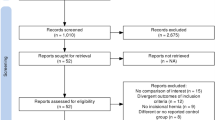Abstract
Background
Laparoendoscopic single-site surgery (LESS) and natural orifice translumenal endoscopic surgery (NOTES) are prospected as the future of minimally invasive surgery. While scarless surgery (NOTES and LESS) is gaining increasing popularity, perception of these approaches should be investigated.
Methods
An anonymous questionnaire describing laparoscopy, LESS, and NOTES was given to medical staff (n = 120), paramedical staff (n = 100), surgical patients (n = 100), and the general population (n = 100). The survey participants (median age, 37 years; range, 18–81 years) were queried about their expectations for surgical treatment and their approach preference.
Results
The first concern of the survey responders was the risk of surgical complications (92%). When asked about the respective importance of surgical safety, cure, and cosmetics, cure was placed first by 74%, safety by 33%, and cosmetics by 3%. These results were not influenced by sex, age, prior surgery or endoscopy, or education. When operative risk was similar, 90% of the participants preferred a scarless approach (75% preferred LESS and 15% preferred NOTES) to laparoscopy. The scarless approach preference was significantly higher among the younger participants (age <40 years; p = 0.026), whereas sex showed no influence. The LESS preference was significantly higher among patients and the general population (86%) than among medical (67%) and paramedical (70%) staffs (p < 0.001). A decreasing trend of preference for LESS and NOTES was observed with increased procedural risks.
Conclusion
Although cure and safety remain the main concern, the population has a favorable perception of scarless surgery, even in the case of increased procedural risk, with LESS favored over NOTES. Such a popular adoption of scarless surgery should warrant the promotion of further research, technological innovations, and the establishment of surgeon training to improve its safety.


Similar content being viewed by others
References
Gettman M, Box G, Averch T, Caddedu JA, Cherullo E, Clayman RV, Desai M, Frank I, Gill I, Gupta M, Haber GP, Humphreys M, Kaouk J (2008) Consensus statement on natural orifice transluminal endoscopic surgery and single-incision laparoscopic surgery: heralding a new era in urology. Eur Urol 53:1117–1120
Kelley W (2008) Single-port laparoscopic surgery. Laparoscopy Today 7:5–6
Osborne D, Alexander G, Boe B, Zervos E (2006) Laparoscopic cholecystectomy: past, present, and future. Surg Technol Int 15:81–85
Périssat J (1999) Laparoscopic surgery: a pioneer’s point of view. World J Surg 23:863–868
Sauerland S, Agresta F, Bergamaschi R (2006) Laparoscopy for abdominal emergencies: evidence-based guideline of the European Association for Endoscopic Surgery. Surg Endosc 20:14–29
Bucher P, Pugin F, Morel P (2010) Transumbilical single-incision laparoscopic sigmoidectomy for benign disease. Colorectal Dis 12(1):61–65
Haas C, Champion A, Secor D (2008) Motivating factors for seeking cosmetic surgery: a synthesis of the literature. Plast Surg Nurs 28:177–182
Frederick D, Lever J, Peplau L (2007) Interest in cosmetic surgery and body image: views of men and women across the life span. Plast Reconstr Surg 120:1407–1415
Bucher P, Pugin F, Morel P, Hagen M (2008) Scarless surgery: myth or reality through NOTES? Rev Med Suisse 4:1550–1552
Otten A (1992) The influence of the mass media on health policy. Health Aff 11:111–118
Swanstrom L, Volkmann E, Hungness E, Soper N (2009) Patient attitudes and expectations regarding natural orifice translumenal endoscopic surgery. Surg Endosc 23(7):1519-1525
Volckmann E, Hungness E, Soper N, Swanstrom L (2007) Perceptions of natural orifice translumenal surgery. SAGES 2007 Annual Meeting Program Book. www.sages.org/07program/SAGES_2007_Abstracts_Only.pdf. Retrieved 15 Oct 2008
Bucher P, Pugin F, Buchs N, Ostermann S, Morel P (2009) Single-port access laparoscopic cholecystectomy (with video). World J Surg 33:1015–1018
Archer S, Brown D, Smith C et al (2001) Bile duct injury during laparoscopic cholecystectomy: results of a national survey. Ann Surg 234:549–558
Gigot J (2007) Bile duct injury during laparoscopic cholecystectomy. J Chir 144:383–384
Csikesz N, Ricciardi R, Tseng J, Shah S (2008) Current status of surgical management of acute cholecystitis in the United States. World J Surg 32:2230–2236
Hagen M, Wagner O, Christen D, Morel P (2008) Cosmetic issues of abdominal surgery: results of an enquiry into possible grounds for a natural orifice transluminal endoscopic surgery (NOTES) approach. Endoscopy 4:1550–1552
Bucher P, Pugin F, Morel P (2009) Scarless Surgery: reality through umbilical laparoendoscopic single-site surgery. Rev Med Suisse 5(209):1412–1415
Varadarajulu S, Tamhane A, Drelichman E (2008) Patient perception of natural orifice transluminal endoscopic surgery as a technique for cholecystectomy. Gastrointest Endosc 67:560–854
Peterson C, Ramamoorthy S, Andrews B (2008) Women’s positive perception of transvaginal NOTES surgery. Surg Endosc. Epub ahead of print 5 December
Volckmann E, Hungness E, Soper N, Swanstrom L (2007) Surgeon perception of natural orifice translumenal endoscopic surgery (NOTES). SSAT 2007 Annual Meeting Abstract Book. Retrieved 25 October 2008 at www.ssat.com/cgi-bin/2007-Posters.cgi
Buess G, Cuschieri A (2007) Raising our heads above the parapet: ES not NOTES. Surg Endosc 21:835–837
ASGE SAGES (2006) ASGE/SAGES Working Group on Natural Orifice Translumenal Endoscopic Surgery White Paper 2005. Gastrointest Endosc 63:199–203
Slim K, Launay-Savary M (2008) NOTES: the debate continues. Surg Endosc 22:2326
Bucher P, Ostermann S, Pugin F, Morel P (2009) E-NOTES Appendectomy versus transvaginal appendectomy: similar cosmetic results but shorter complete recovery? Surg Endosc 23:916–917
Bucher P, Wuthrich P, Pugin F, Gervaz P, Morel P (2008) Totally intracorporeal laparoscopic colorectal anastomosis using circular stapler. Surg Endosc 22:1278–1282
Disclosures
Pascal Bucher, François Pugin, Sandrine Ostermann, Frederic Ris, Michael Chilcott, and Philippe Morel have no conflicts of interest or financial ties to disclose.
Author information
Authors and Affiliations
Corresponding author
Appendix
Appendix



Rights and permissions
About this article
Cite this article
Bucher, P., Pugin, F., Ostermann, S. et al. Population perception of surgical safety and body image trauma: a plea for scarless surgery?. Surg Endosc 25, 408–415 (2011). https://doi.org/10.1007/s00464-010-1180-1
Received:
Accepted:
Published:
Issue Date:
DOI: https://doi.org/10.1007/s00464-010-1180-1




